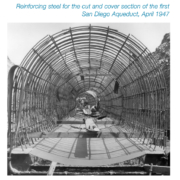California Congressman Jim Costa Crosses Party Lines To Bring More Water To The Central Valley
On Wednesday, Congressman Jim Costa (CA-16) again crossed party lines in the House Natural Resources Committee to support two bills that could dramatically improve the reliability and quantity of Valley water supplies. The first bill – introduced by Representatives Ken Calvert (CA-42) and Costa (CA-16) – aims to bring all Endangered Species Act regulation of species that have a portion of their lifecycle in the ocean, like salmon, under a single regulating government agency.



